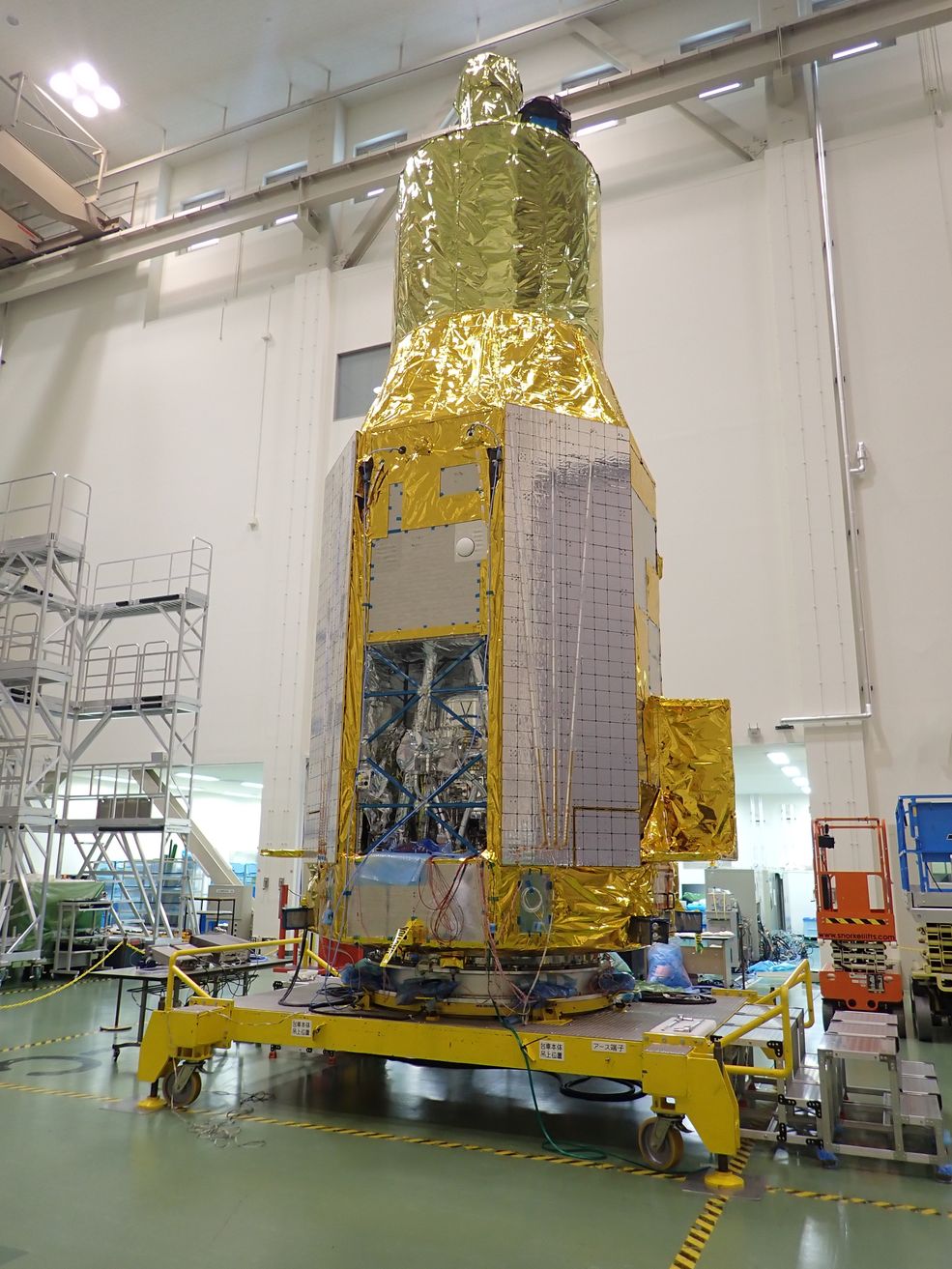Launch of X-ray telescope and lunar lander on Japanese H-IIA spacecraft canceled
The Mitsubishi Heavy Industries H-IIA launch vehicle is gearing up for its 47th flight, which will carry the Smart Lander for Investigating Moon (SLIM) robotic lunar lander and the X-Ray Imaging and Spectroscopy Mission (XRISM) X-ray telescope. This flight marks the second launch of 2023 for the H-IIA, with only three more flights remaining before its retirement.
Originally scheduled to launch on August 28, the launch was postponed due to poor weather conditions. The launch window for this mission will remain open until September 15.
The H-IIA will take an eastward trajectory over the Pacific immediately after liftoff. At approximately 1 minute and 48 seconds into the flight, the vehicle’s two solid rocket boosters will be released. The core, powered by the LE-7A engine using liquid hydrogen and liquid oxygen propellants, will continue to operate until around 6 minutes and 35 seconds into the flight.
After stage separation, the second stage, equipped with a LE-5B engine using the same propellant combination as the core, will burn for approximately 15 minutes before the two payloads are separated.
The XRISM X-ray telescope is destined for a 550-kilometer circular low-Earth orbit inclined 31 degrees to the Equator. On the other hand, the SLIM lunar lander will be placed in the same orbit but will utilize its own engines to reach the Moon.
XRISM is a replacement mission initiated in 2016 after the failure of the Hitomi X-ray observatory. Hitomi suffered a critical failure shortly after reaching orbit, leaving a potential gap in X-ray observations. The XRISM project was launched by JAXA in collaboration with NASA, ESA, and major universities worldwide.
X-ray astronomy has only been possible since the advent of spaceflight. X-rays from deep space are attenuated by Earth’s atmosphere, making observations from the ground impossible. XRISM aims to study clusters of galaxies, the evolution of the Universe’s structure, the spread of matter through interstellar space, energy transportation in the Universe, and the behavior of matter under extreme gravitational and magnetic fields.
XRISM is equipped with two instruments: the Resolve spectrometer and the Xtend X-ray imager. Resolve is designed to make detailed temperature and composition measurements of X-ray emitting objects and can also determine their movement. To make these observations, Resolve needs to be cooled to just above absolute zero (-273.1 degrees Celsius) using superfluid helium. Xtend, on the other hand, has a larger field of view and is capable of imaging larger celestial objects.
The SLIM lunar lander is Japan’s attempt to join the club of nations that have successfully landed probes on the Moon. SLIM will attempt a precision landing within 100 meters of its target in Mare Nectaris, using face recognition technology and onboard sensors for navigation. Its main objective is to demonstrate the capability for future landers to reach previously inaccessible sites.
SLIM will transition to a horizontal position just before landing and will touch down on the lunar surface using five landing legs with shock absorbers. It’s equipped with a multi-band spectral camera to measure the composition of rocks surrounding the landing site. Additionally, SLIM will deploy two probes on the lunar surface to conduct further exploration.
The H-IIA launch vehicle, which has been Japan’s workhorse for nearly 30 years, is nearing retirement. The H3 rocket is set to replace it but has faced setbacks, with its first flight ending in failure. Once the H3’s issues are resolved, it will become Japan’s main launcher for important missions to the International Space Station, weather satellites, communications satellites, and future lunar and interplanetary flights.
Overall, these upcoming missions highlight Japan’s commitment to advancing space exploration and scientific research, contributing to our understanding of the Universe and paving the way for future missions.
